This article was co-authored by Alina Lane, DDS. Dr. Alina Lane is a Dentist who runs All Smiles Dentistry, a general practice dental office based in New York City. After completing a DDS at the University of Maryland, Dr. Lane completed a year-long clerkship in Implantology at the University of Maryland, where she focused on the advanced restoration of dental implants. She continued her advanced education by completing a General Practice Residency at Woodhull Medical Center, an affiliate of the NYU School of Medicine. She received the Woodhull Medical Center Resident of the Year 2012-2013.
There are 10 references cited in this article, which can be found at the bottom of the page.
wikiHow marks an article as reader-approved once it receives enough positive feedback. This article received 12 testimonials and 86% of readers who voted found it helpful, earning it our reader-approved status.
This article has been viewed 1,606,539 times.
Extracting wisdom teeth often leaves large holes in your gums and the bone beneath them. The hole is the space where roots have developed; in some cases the hole may be the size of an entire molar.[1] Most surgeons will use stitches to close these holes; however, in some cases stitches aren't used, and in these cases you can expect certain complications. Food particles tend to get stuck in these holes, and merely rinsing with salt water may not successfully clean them out. Learning how to properly clean and care for gum wounds can help prevent infection and complications during the healing process.
Steps
Caring for Your Wound Immediately After Surgery
-
1Ask your surgeon whether sutures were used. If your surgeon closed the wounds with stitches, food won't be able to get in the holes. You may see particles near the extraction sites that look grey, black, blue, green, or yellow. This is normal discoloration and is part of the healing process.[2]
-
2Avoid contact with the wound for the remainder of the day. Thoroughly brush and floss the rest of your mouth, but avoid the teeth closest to the wound.Advertisement
-
3Rinse very gently with saltwater for the first 48 hours. It's okay to rinse the first day, but you have to take certain precautions.[3]
- Combine 1/4 teaspoon salt with one cup of warm water. Stir it well to mix.
- Avoid swishing the saltwater rinse in your mouth or spitting it out. Gently move your head to move the rinse around your mouth or use your tongue to help move the saline solution around.
- After rinsing, lean over the sink and open your mouth to let the rinse fall out. Don't spit.
- Your doctor may also give you chlorhexidine gluconate (Peridex, Periogard) to rinse with. This is a germicidal mouthwash that helps kill bacteria. Try diluting it with water at a 1:1 ratio to avoid any possible negative effects of the chlorhexidine.[4]
-
4Do not use fingers or any foreign objects to remove food. Don't use your tongue to prod the hole, either. Doing this may introduce bacteria to the wound, and could disrupt the healing tissue.[5] Instead, stick to salt water rinses to remove food particles.
- Avoid brushing the area where the tooth was removed for at least 8 hours.[6]
-
5Avoid smoking and using straws. Any kind of suction activity in the mouth could dislodge blood clots, causing a painful dry socket and potentially leading to infection.[7]
Rinsing After the First Day
-
1Make a salt water rinse. Salt water rinses are useful for cleaning wounds in the mouth, removing food, and reducing pain and inflammation.
- Mix 1/4 teaspoon salt in eight ounces of water.
- Stir completely, so that the salt is well-dissolved in the water.
-
2Rinse gently using the salt water rinse, until the solution is completely used. You may wish to focus your rinsing action on the affected side of your mouth, to most effectively remove debris and provide inflammation relief.[8]
- Even if you feel like something is caught in your mouth, avoid swishing water very forcefully, as it can disturb the healing process. It's crucial to keep the blood clot in place for your gums and bone to heal again, and when you put a lot of pressure in your mouth from swishing and spitting, it can disrupt the blood clot.[9]
-
3Repeat the rinse procedure every two hours and after every meal. You'll also want to rinse thoroughly before you go to sleep. Doing this will reduce inflammation and help ensure that your wound is kept clean and can heal properly.[10]
-
4Use a syringe if directed. Using a syringe may help you control the flow of water and allow you to clean your wound more efficiently; however, if not used properly, an irrigator or syringe can dislodge the blood clot forming to heal the tissue. Ask your dentist whether you should use one.
- Fill the syringe with lukewarm water. You may also use the saltwater solution described above.
- Aim the tip of the syringe as close as possible to the site of your wound without actually touching it.
- Flush the site of the wound from any necessary angles to thoroughly clean the wound and prevent infection. Do not push too forcefully — expelling a powerful jet of water directly into the socket could be harmful.
Knowing What to Expect After the First Day
-
1Don't panic. Food that gets caught in a wisdom teeth wound may be uncomfortable, but it alone should not cause an infection. Healing can still take place even if food gets caught, and it's more important to avoid touching or probing the wound.[11]
-
2Don't confuse a clot with food. Clots in the gums may appear gray and fibrous, like food particles. Cleaning too vigorously in this case may remove the clot and cause further complications.[12]
-
3Stick to soft foods. This is especially important during the first 24 hours after surgery. Gradually move from soft foods to semi-soft foods as your wound heals. It's generally best to avoid hard, chewy, or crunchy foods, like chips.[13] These are most prone to pooling in the socket and causing irritation or infection.[14]
- Opt for softer foods like pasta and soup, but keep in mind that small foods, like rice, can get caught in the hole from the extraction, which can irritate your gums.[15]
- Chew on the opposite side or your mouth from the extraction site.[16]
- Avoid eating foods that are too hot or cold foods. Go for room temperature foods during the first two days.
-
4Avoid sources of contamination. Wash your hands frequently with soap and water. Don't shake hands with people for a week or so. Don't share toothbrushes or other implements with others. You want to make sure that you don't pick up a secondary infection that could tax your immune system.
-
5Know when to seek professional help. Some bleeding will be common over the first few days following a tooth extraction. If you experience any of the following symptoms, however, you should contact your dentist or oral surgeon immediately.[17]
- Excessive bleeding (more than a slow ooze)
- Pus in the wound
- Difficulty swallowing/breathing
- Fever
- Swelling that increases after two or three days
- Blood or pus in nasal mucus
- Throbbing, dull pain after the first 48 hours
- Bad breath after three days
- Pain that is not reduced after taking painkillers
Expert Q&A
-
QuestionWhat should i eat after wisdom teeth removal?
 Alina Lane, DDSDr. Alina Lane is a Dentist who runs All Smiles Dentistry, a general practice dental office based in New York City. After completing a DDS at the University of Maryland, Dr. Lane completed a year-long clerkship in Implantology at the University of Maryland, where she focused on the advanced restoration of dental implants. She continued her advanced education by completing a General Practice Residency at Woodhull Medical Center, an affiliate of the NYU School of Medicine. She received the Woodhull Medical Center Resident of the Year 2012-2013.
Alina Lane, DDSDr. Alina Lane is a Dentist who runs All Smiles Dentistry, a general practice dental office based in New York City. After completing a DDS at the University of Maryland, Dr. Lane completed a year-long clerkship in Implantology at the University of Maryland, where she focused on the advanced restoration of dental implants. She continued her advanced education by completing a General Practice Residency at Woodhull Medical Center, an affiliate of the NYU School of Medicine. She received the Woodhull Medical Center Resident of the Year 2012-2013.
Board Certified Dentist Stick to soft foods, such as soup and pasta. Steer clear of hard, chewy, or crunchy foods, as well as small foods that have small pieces, such as rice.
Stick to soft foods, such as soup and pasta. Steer clear of hard, chewy, or crunchy foods, as well as small foods that have small pieces, such as rice. -
QuestionI had stitches but it seems like the stitches broke and left a hole, and now I've got a gum wound. I've already rinsed with mouthwash and salt water, what other options do I have, and can I get an infection?
 Cristian Macau, DDSDr. Macau is an oral surgeon, periodontist, and aesthetician at Favero Dental Clinic in London. He received his DDS from Carol Davila University of Medicine in 2015.
Cristian Macau, DDSDr. Macau is an oral surgeon, periodontist, and aesthetician at Favero Dental Clinic in London. He received his DDS from Carol Davila University of Medicine in 2015.
Doctor of Dental Surgery Stitches may break during eating, speaking or even while sleeping so don’t worry. The first five hours after extraction are important in forming the clot. Make sure you eat according to the doctor’s indications, clean your teeth, take any medication if it has been prescribed and check in the mirror for any food left in the hole.
Stitches may break during eating, speaking or even while sleeping so don’t worry. The first five hours after extraction are important in forming the clot. Make sure you eat according to the doctor’s indications, clean your teeth, take any medication if it has been prescribed and check in the mirror for any food left in the hole. -
QuestionWhat else could I do if it hurts to swish saltwater around?
 Cristian Macau, DDSDr. Macau is an oral surgeon, periodontist, and aesthetician at Favero Dental Clinic in London. He received his DDS from Carol Davila University of Medicine in 2015.
Cristian Macau, DDSDr. Macau is an oral surgeon, periodontist, and aesthetician at Favero Dental Clinic in London. He received his DDS from Carol Davila University of Medicine in 2015.
Doctor of Dental Surgery Replace the saltwater with mouthwash and see how it goes. You can also try rinsing with common wormwood tea or even place a small drop of aloe gel near the area.
Replace the saltwater with mouthwash and see how it goes. You can also try rinsing with common wormwood tea or even place a small drop of aloe gel near the area.
Warnings
- Only begin this process when you can comfortably open your mouth.⧼thumbs_response⧽
- This process is not to be used in place of anything your surgeon instructs you to do. Follow your surgeon's advice closely and let him or her know about any complications.⧼thumbs_response⧽
- Make sure the instruments you use are sterile, single-use instruments.⧼thumbs_response⧽
- If you experience any pain during this process, consult your surgeon before continuing.⧼thumbs_response⧽
Things You'll Need
- Warm water
- Salt
- Syringe (sterile)
References
- ↑ http://www.mayoclinic.org/tests-procedures/wisdom-tooth-extraction/basics/what-you-can-expect/prc-20020652
- ↑ http://www.foleyoralsurgery.com/surgical-instructions/wisdom-tooth-removal/
- ↑ https://www.rcseng.ac.uk/patients/recovering-from-surgery/wisdom-teeth-extraction/things-that-help-you-to-recover-more-quickly
- ↑ https://www.drugs.com/mtm/chlorhexidine-gluconate-oral-rinse.html
- ↑ http://heritageoralsurgery.com/surgical-instructions/wisdom-tooth-removal/
- ↑ Alina Lane, DDS. Board Certified Dentist. Expert Interview. 21 April 2020.
- ↑ http://www.mayoclinic.org/tests-procedures/wisdom-tooth-extraction/basics/what-you-can-expect/prc-20020652
- ↑ http://www.oralfacialsurgeon.com/procedures/surgical-instructions/after-wisdom-tooth-removal/
- ↑ Alina Lane, DDS. Board Certified Dentist. Expert Interview. 21 April 2020.
- ↑ http://www.mayoclinic.org/tests-procedures/wisdom-tooth-extraction/basics/what-you-can-expect/prc-20020652
- ↑ http://concordlexington.com/faqs/
- ↑ https://www.webmd.com/oral-health/guide/pulling-a-tooth-tooth-extraction
- ↑ Alina Lane, DDS. Board Certified Dentist. Expert Interview. 21 April 2020.
- ↑ https://www.mayoclinic.org/diseases-conditions/dry-socket/symptoms-causes/syc-20354376
- ↑ Alina Lane, DDS. Board Certified Dentist. Expert Interview. 21 April 2020.
- ↑ Alina Lane, DDS. Board Certified Dentist. Expert Interview. 21 April 2020.
- ↑ http://www.mayoclinic.org/tests-procedures/wisdom-tooth-extraction/basics/what-you-can-expect/prc-20020652
About This Article
To remove food from extracted wisdom teeth sockets, rinse the wound very gently with salt water during the first 48 hours after surgery. Additionally, use a salt water rinse every 2 hours, or following every meal. You should also avoid using your fingers, tongue, or any foreign object to remove food, because this could cause injury and infection. If you’re worried about getting food stuck in your wound, stick to soft foods, like soup, until it has healed for a few days. For tips on how to tell if your wound is infected, keep reading!
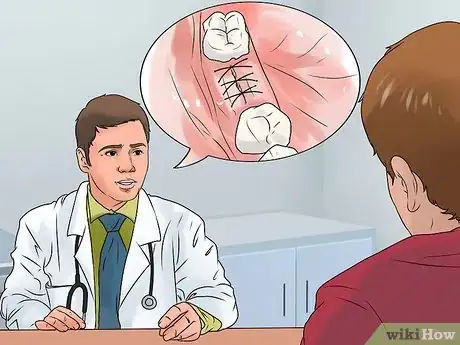
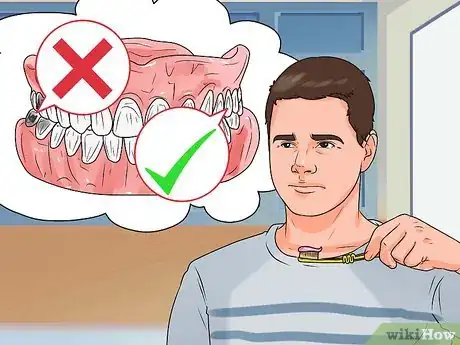

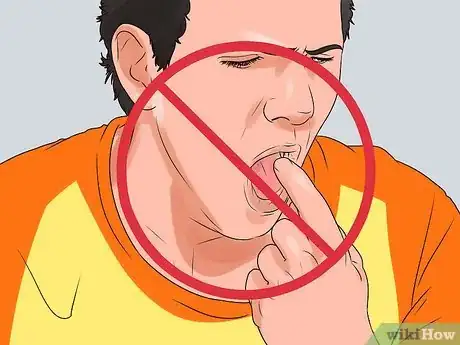

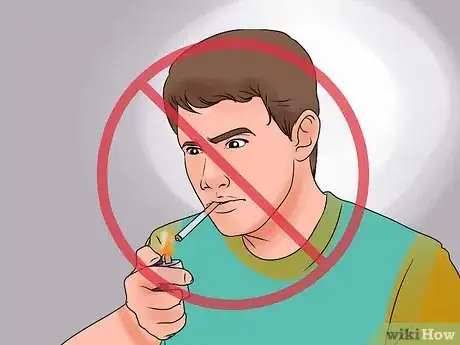
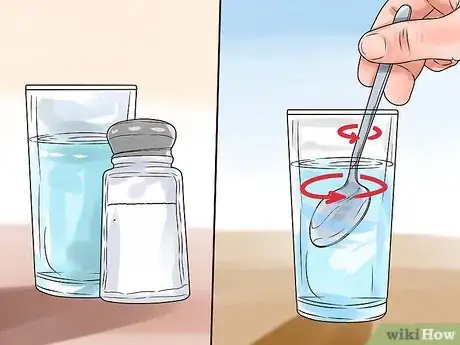
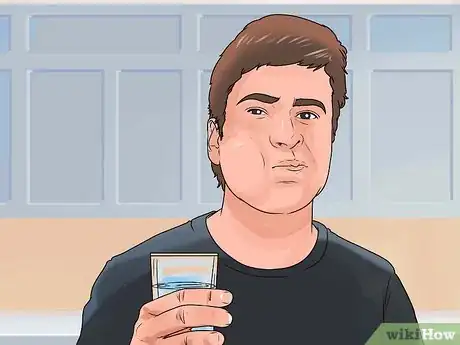
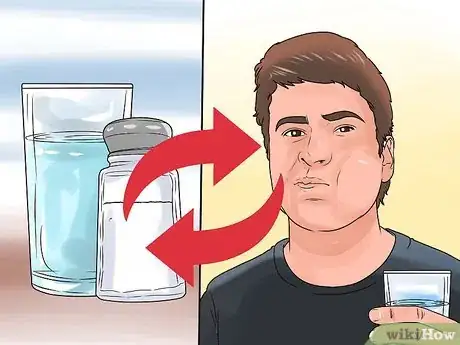
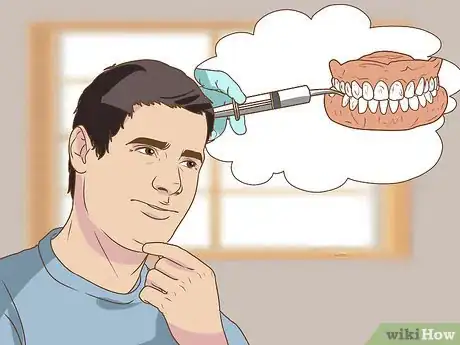
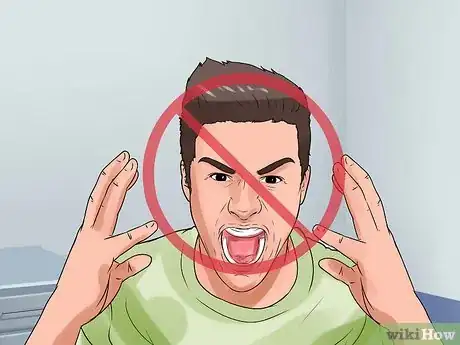
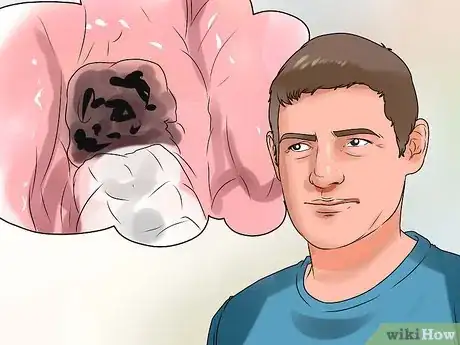
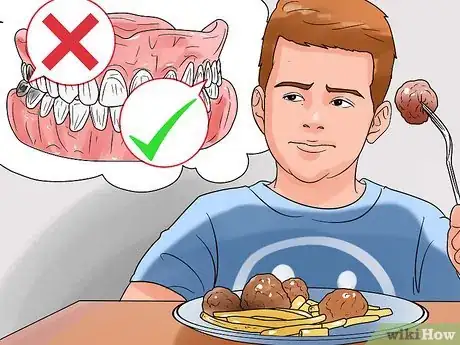
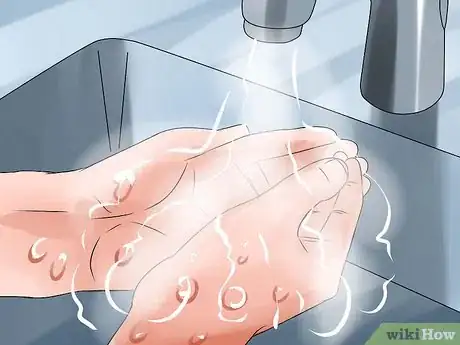





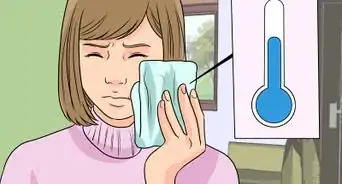

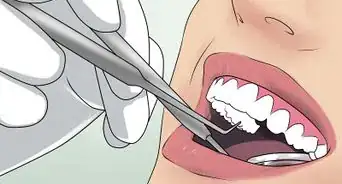






















































Medical Disclaimer
The content of this article is not intended to be a substitute for professional medical advice, examination, diagnosis, or treatment. You should always contact your doctor or other qualified healthcare professional before starting, changing, or stopping any kind of health treatment.
Read More...